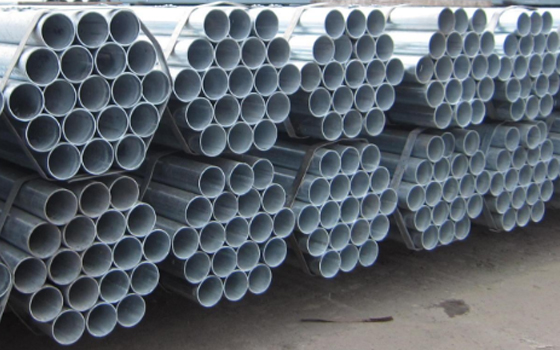Welcome to Zhishang Steel Co., Ltd.
TEL: (Gavin) +86-15665898999 | Email : info@zhishangsteel.com

"KBG" and "JDG" represent two widely used galvanized wire pipe standards in the field of electrical installation. These two standards apply to different types of construction and engineering projects respectively, and they differ significantly in several ways. The following is a detailed expansion of the two standards:
Differences in standards:
KBG wire pipe is in accordance with the Chinese national standard "CECS100:98 set of buttressed thin-wall steel conduit wire pipeline construction and acceptance code" stipulated in the product. This standard provides clear guidance and requirements for the design, manufacture and application of KBG wire tubes, ensuring that the quality and performance of KBG wire tubes can meet specific national standards.
Differences in specifications:
In terms of specifications, KBG and JDG tubes may have different specification ranges and size standards. Although they may be similar in basic parameters such as diameter and wall thickness, there may be differences between the two when it comes to specific dimensional specifications. These differences may affect the suitability and compatibility of wire tubes in different application scenarios.
Differences in quality control:
Because KBG wire tubes follow national standards, they usually undergo more stringent quality control and supervision during production. This ensures that the quality and performance of KBG tube products are stable and reliable. The quality of JDG tubes may be more affected by internal standards and production management levels, which may lead to differences in quality between different manufacturers.
Differences in connection modes:
The KBG tube is connected in a buttoned-down manner, which means that during installation, a special clamp is required to clamp the tube and the conduit, thus achieving a reliable connection. The JDG tube is connected in a tight way, which is tight by using screws to secure the casing and conduit, which may be easier and faster in some cases.
Differences in tube wall thickness:
In terms of wall thickness, the KBG tube usually has a thickness choice of 1.0 mm or 1.2 mm, while the JDG tube has a wall thickness of 1.6 mm for the standard type and 1.5 mm for the ordinary type. This difference reflects the different material thickness requirements in the design and manufacture of the two types of tubes, which may also affect their load-bearing capacity and durability.
Differences in installation speed:
Because JDG tubes use screw set connection technology, the installation process is usually faster than KBG tubes. In contrast, KBG tubes need to be connected using pressure clamps, which can increase the time and complexity of installation.
Differences in application areas:
Because of its light weight and ease of installation, KBG pipes are often used in commercial, civil and public power lines. Because of its good corrosion resistance and high temperature resistance, JDG pipe is more suitable for application in chemical, petroleum, natural gas and other special environments, which may put forward higher requirements for the performance of line pipes.
In summary, there are significant differences between KBG and JDG tubes in connection mode, tube wall thickness, installation speed and application fields. These differences make each pipe have its unique advantages and application scenarios, so when choosing pipe, it is necessary to decide which type of pipe to use according to the specific engineering needs and environmental conditions.

Zhishang Steel has always been a pioneer in custom steel and special supplies, and has been recognized for its efforts in enhancing work efficiency and product quality. In addition to ISO9001:2015 certification, we also adhere to strict quality policies and proprietary procedures. If you have any questions, please contact us to provide the best type of product solution for your pre-painted, coil coating metal process, we will closely support after-sales service to ensure that your subsequent problems can be solved in a timely manner, if you have any questions, please send email to info@zhishangsteel.com, we look forward to serving you.

Zhishang Steel, specializing in domestic steel products trade, warehousing, processing and other services. The team has four service teams: Shandong Zhishang Steel Co., LTD., Shandong Zhiyiheng Trading Co., LTD., Tai 'an Zhishang Economic and Trade Co., LTD., Shandong Zhishang Steel Structure Co., LTD. Mainly engaged in steel coil, coated, stee···